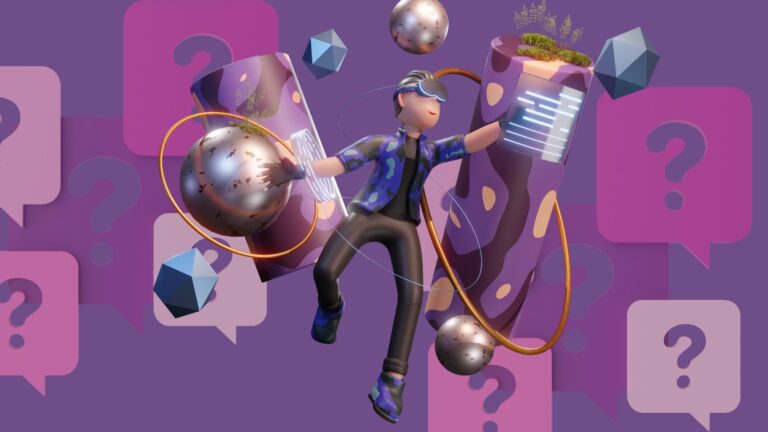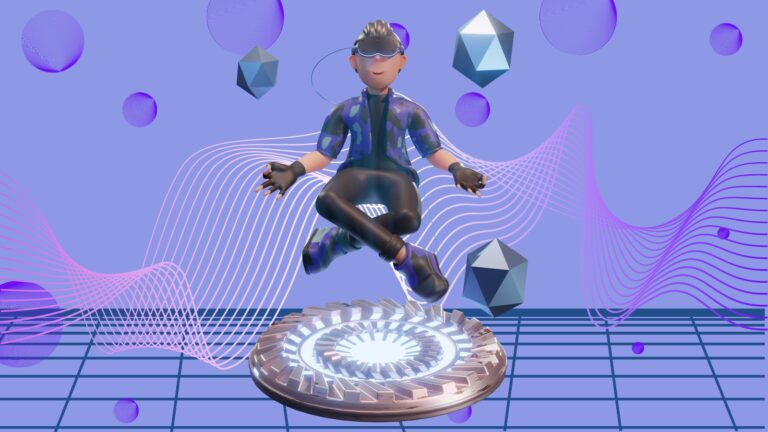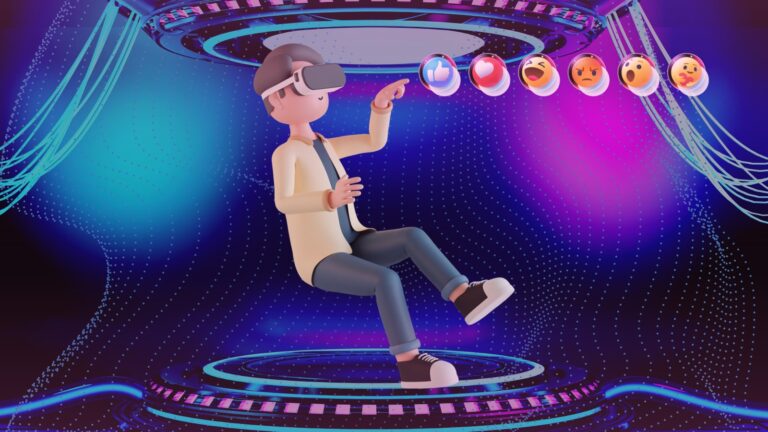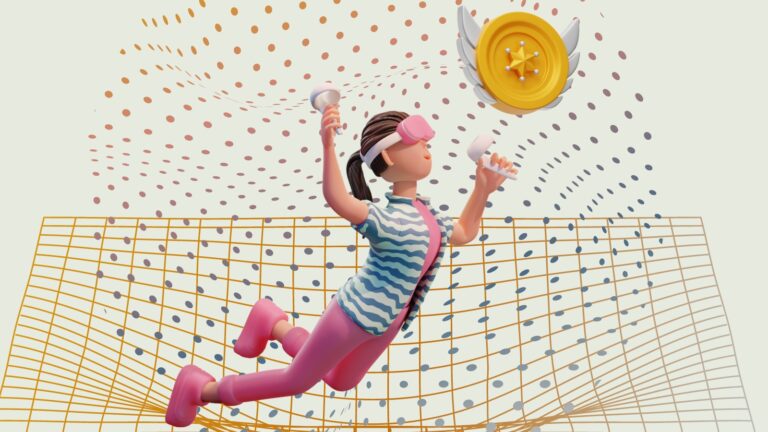Did you know that you can use an e-nose to receive the smell of your favourite dessert using digital scent technology? Were you aware that the multisensory internet can give you a chance not just to feel the smell but also taste it? Innovators are currently working on enabling digital senses that transmit augmented smell, taste, and touch and not just sight and sound. A buzzing topic that we always get our ears tuned into is the ins and outs of the Internet of Senses, but how familiar are you with this concept?
The immersive experiences of technology took user experience to a whole new level by transforming interactive experiences into sensational online experiences. Did you know that this technology capability is the reason why the biggest social media platform: Facebook, changed its well-reputed name to ‘Meta’? As mind-blowing as it sounds, do you think the Internet of Senses is a blessing or a curse? With the start of the new year, Cerexio wishes to share this informative article about the facts, features and peculiarities of the future of online experiences: The Internet of Senses.
What is the Internet of Senses?

Currently, digital technology allows visual and auditory experiences for its users. Still, the concept of the Internet of Senses, even at its premature stages, has the capacity to offer sensation, taste and scent that are indiscernible from real-life experiences. The Internet of Senses will be enabled by modern IT capabilities like AR, VR, AI and 5G(or Starlink or 6G)-powered automation. Innovators and 6G/5G/Starlink enthusiasts predict that this technology will emerge in 2030- an age where reality is inseparable from multisensory virtual experiences.
The term ‘Internet of Senses’- coined by Ericsson’s ConsumerLab– is considered the narrowest gap between the digital and physical worlds. It envisions a world that is digitally hyper-connected through augmenting the 6 human senses: hearing, feeling, seeing, tasting, thinking and smelling. Low latency is critical for enabling haptic experiences, and 6G or Starlink capabilities will provide seamless communication between the internet and real world, allowing futuristic initiatives like Wi-Fi implants, self-driving cars, and cellular surfaces to become a reality. The objective of the Internet of Senses is to be indiscernible from our existing reality as edge computing evolves, shifting network control away from centralised clouds and towards localised devices. Applications such as “dual brain” — one in our world and one in the Metaverse — require supporting connection via a seamless intermediate such as 6G or Starlink hyperspeed internet.
Ericsson posted an article, namely 10 Hot Consumer Trends 2030: The Internet of Senses, that explains a future where online consumers will blur the lines between virtuality and reality. It explains the Internet of Senses as an uncanny realism of a fleeting thought in your head; in other words, if you need to spend time with your friends and throw a space-themed party, you can simply project digital items. You can taste digital dishes, move around items and converse with the avatars of your friends as if you were in the same room.
Thus, the Internet of Senses will turn our digital encounters into immersive experiences by making them multimodal- not just visual and auditory experiences. It enhances your touch, taste, auditory, tactile and sight senses in the virtual realm. Another fascinating example is that it propels you to transport to a beach, where you can feel the wind on your face, the sun on your back, the dampness of the ocean air on your skin, and breath the fresh aroma of the sea breeze – all without leaving your living room. As a result of such multimodal experiences conveyed across future networks, it can be assumed that the Internet of Senses will emerge within a couple of decades or sooner.
Do People Expect This Surreal Virtual Experience?

In the Ericsson article, it was said that statistically, 54% of customers that use AR glasses have requested to offer them information about persons they encounter online, such as their name or where they met before, in response to a thought request. This proves that clients are already interested in interacting with a multimodal that can be merged with their mental preferences, unknowingly demanding the capabilities predicted to be offered by the Internet of Senses.
Therefore, the idea is that technology will have complete access to our minds. As a result, roughly 50% of all responses assume that by 2030, the famous ancient Greeks will finally be proven wrong! Consumers have already expressed interest in thought communication: in a 2015 trend study, where more than two-thirds predicted that telekinesis of digital objects and thought communication would be ubiquitous by 2020. However, the predetermined exaggeration was only a half-truth because, by 2020, only auditory and visually immersive experiences had become the new normal.
Facebook Metaverse: The Beginning of A New World

Simply defined, the metaverse is a cyberspace where you may create your own avatar and travel about in a virtual area. It’s also a virtual environment where you may meet people from all over the globe, perform your chores in an interactive computerised world, and even use it as a private bubble to listen to music, read a book, or engage with holograms to create something. Much of the metaverse revolves around creating one-of-a-kind experiences in augmented or virtual reality. Many organisations and startups are concentrating on developing digital equivalents for the five human senses: sight, taste, touch, hearing, and smell. The Internet of Senses, which includes anything from digital fragrances to simulated touches, can serve to bring the metaverse to life even more.
The Internet of Senses is the capability that allows the metaverse to be more than an image of the founder of Facebook (now rebranded as Meta Platforms Inc.); it makes the metaverse a possible future with an augmented world relying on digital items. So is this technology, as marvellous as it sounds, a plausible capability if it is around the corner of our future? Is it an invasion of privacy of a person’s mind, or is it a breakthrough that will impact our private, commercial, corporate and industrial lives? Here are some points that question the benefits and threats of the Internet of Senses.
Internet of Senses: a Curse or a Blessing?

Fresh concepts will make humans have mixed feelings about new things; the internet, too, was deemed (still is) as a corrupt invasion of privacy and threat by many people. Likewise, the Internet of Senses also has subjective intuitions that either favour or disfavour it in two polar extremes. Here are some of the points about the Internet of Senses that either address it as a blessing or a curse.
The Bright Side of the Coin
No Boundaries
The Internet of Senses has the ability to drastically minimise the need for travel and even workplaces by making digital experiences and interaction “as good as being present in-person.” It takes down all barriers between people who want to communicate to meet a common purpose. Despite the person’s location, physical disabilities or any other limitation, these people are given a chance to meet, greet, dine and share hands-on experiences in tasting, smelling and touching objects together.
Eco-Friendly
When the world adapts to the Internet of Senses, they will find travelling as an otiose effort to meet people. This will significantly contribute to reducing greenhouse emissions to net-zero levels, for it optimises service and de-materialise goods- which requires less energy, time, resources and human effort during production and consumption.
The Not-So-Bright Side of the Coin
Very Pricey
One of the main restraints that many believe is that the Internet of Senses will only be readily available for some, given it’s pretty expensive to develop, deploy or use. Because the costs of these digital multi-sensory gadgets are so high, there is concern about how easily the technology will be adopted until prices fall dramatically in future.
No Privacy
The invasion of privacy is another accusation most people make when discussing the topic of the Internet of Senses. Concerns about data privacy in the Internet of Senses are predicted to be a big impediment, for advertisers will use people’s digital sensory data to target their products to a genuine crowd. Finally, the data exploited by the Internet of Senses is very sensitive and vital, and its application informs advertisers a lot about an individual. As these technologies become more widely utilised, digital data regulations will have to begin to control their usage.
Are You Ready to Materialise Your Dreams?

Entertainers are already infusing the concept of the Internet of Senses into the world through sci-fi movies like ‘Valerian and the City of a Thousand Planets’. The movie has a central action moment that takes place in a location known as the Big Market. It’s a kind of hyperdimensional mall where people arrive on buses to put on VR headsets and stroll about a desert, virtually experiencing a million businesses by interacting with objects. Valerian’s Big Market shows the future as envisioned by the Internet of Senses in a nutshell. Click here to watch the movie scene.

Is this where our future is heading? Do you think making our virtual experiences as real as possible can affect our sense of reality? Please connect with Cerexio to share your thoughts on this.
Did you know that the Cerexio blog archive probes the most recent and buzzing technology topics yearly? Stay connected with Cerexio blog articles by frequently visiting our website or requesting blog updates by mailing us at info@cerexio.com. If you think we can help you with technology solutions or consultancy, you can also call us at +65 6762 9293 for more information.
